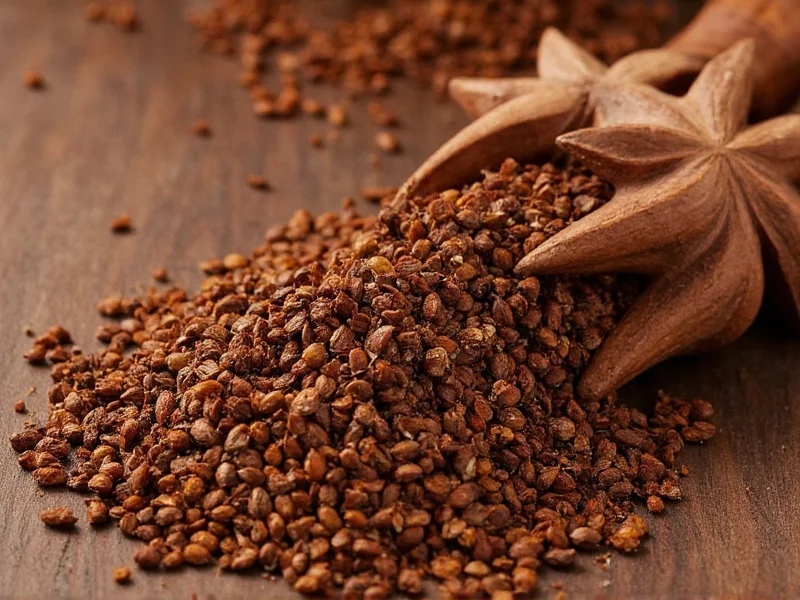Allspice, scientifically known as Pimenta dioica, is one of the most misunderstood spices in culinary history. Many assume its name indicates a blend of multiple spices, but this couldn't be further from the truth. This aromatic spice comes exclusively from the dried berries of an evergreen tree in the myrtle family, native to Jamaica and other tropical regions of the Americas.
The Botanical Source of Allspice
The Pimenta dioica tree, also called the allspice tree or pimento tree, produces small green berries that are harvested before ripening. These berries undergo a careful drying process that transforms them from green to reddish-brown and finally to a deep brown color. During this process, the berries develop their signature warm, complex flavor profile that combines notes reminiscent of several spices.
Why Is It Called Allspice?
British explorers in the 1600s named this spice “allspice” because its flavor profile resembles a combination of cinnamon, cloves, and nutmeg. The name stuck despite the spice being a single ingredient. This historical misnomer continues to cause confusion today, with many cooks mistakenly believing allspice is a pre-mixed blend.
Chemical Composition Behind the Flavor
The unique flavor of allspice comes from its specific chemical composition. Key compounds include:
| Compound | Percentage | Flavor Contribution |
|---|---|---|
| Eugenol | 60-90% | Clove-like aroma and warmth |
| Myrcene | 10-20% | Earthy, balsamic notes |
| Caryophyllene | 5-15% | Peppery, woody undertones |
| Terpenes | 2-8% | Citrus and floral hints |
This precise chemical makeup creates the illusion of multiple spices in one. Eugenol provides the dominant clove-like quality, while myrcene contributes earthy notes similar to nutmeg. The combination of these naturally occurring compounds gives allspice its distinctive, multi-dimensional flavor.
Harvesting and Processing Methods
The production of authentic allspice follows a precise timeline:
- Harvesting: Berries are picked when still green and unripe, typically in June and December
- Drying: Berries are spread on mats and sun-dried for 6-10 days, during which they shrink and darken
- Sorting: Only the highest quality berries are selected for premium allspice
- Packaging: Properly dried berries are stored in airtight containers to preserve flavor
Jamaican allspice, particularly from the Port Royal mountains, is considered the gold standard due to the island's ideal growing conditions. The volcanic soil and tropical climate create berries with superior flavor complexity compared to allspice grown in other regions.
Common Misconceptions About Allspice Composition
Several myths persist about what allspice contains:
- Myth: Allspice is a blend of cinnamon, cloves, and nutmeg
- Fact: Authentic allspice contains only Pimenta dioica berries
- Myth: Allspice always includes additional spices
- Fact: Pure allspice is a single-ingredient product; any blend labeled “allspice” is mislabeled
- Myth: Allspice berries are related to black pepper
- Fact: Despite the name “pimento,” allspice is botanically unrelated to pepper (Piper nigrum)
Different Forms of Allspice
Allspice is available in several forms, each with different shelf lives and culinary applications:
- Whole berries: Most flavorful option with longest shelf life (3-4 years when properly stored)
- Ground powder: Convenient but loses potency faster (6-12 months)
- Essential oil: Highly concentrated form used in small quantities for baking
- Pimento dram: Traditional Jamaican liqueur made from allspice berries
Chefs generally prefer whole berries for the best flavor, grinding them fresh as needed. The essential oils that give allspice its distinctive aroma begin dissipating immediately after grinding, which is why pre-ground allspice often lacks the depth of freshly ground berries.
Culinary Applications and Pairings
Allspice features prominently in Caribbean, Middle Eastern, and Latin American cuisines. Its versatility makes it suitable for both sweet and savory applications:
- Savory dishes: Jerk seasoning, pickling spices, sausages, stews, and meat rubs
- Sweet applications: Pumpkin pie, gingerbread, fruit compotes, and spiced cakes
- Beverages: Mulled wine, chai tea, and traditional Jamaican pimento dram
- Preservation: Historically used in pickling and canning due to its antimicrobial properties
The spice's natural synergy with other warm spices explains why it's often mistaken for a blend. When combined with actual cinnamon, cloves, or nutmeg, allspice enhances rather than competes with these flavors, creating a harmonious spice profile.
Storage Recommendations for Maximum Freshness
To preserve allspice's complex flavor compounds:
- Store whole berries in airtight glass containers away from light and heat
- Keep in a cool, dark cupboard (not above the stove or near oven)
- Grind only what you'll use immediately for optimal flavor
- Avoid storing near strong-smelling foods that might be absorbed
- Check for potency by crushing a berry and smelling—fresh allspice should have a strong, complex aroma
Properly stored whole allspice berries maintain their flavor for up to four years, while ground allspice begins losing potency within six months. For serious cooks, investing in a small spice grinder dedicated to allspice ensures maximum flavor in dishes.











 浙公网安备
33010002000092号
浙公网安备
33010002000092号 浙B2-20120091-4
浙B2-20120091-4